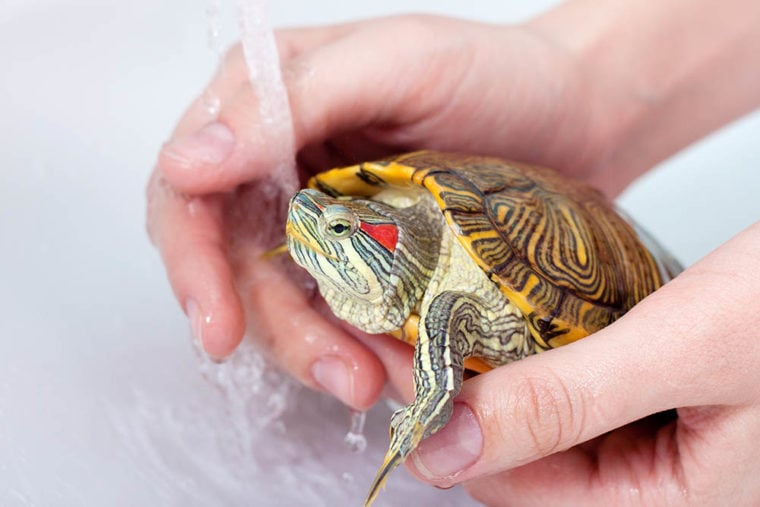
Unlike amphibians, the skin of reptiles is covered with scales that form armor, making their outer layers watertight1 and allowing them to live on land. Another peculiarity of reptiles is that they can absorb water through their skin2. Thus, unlike mammals, lizards do not need to drink but must have access to a source of water to bathe.
Moreover, in their natural habitat, reptiles will naturally seek out these water points to satisfy their thirst, but pet reptiles are obviously more restricted in their choice. Therefore, it is the responsibility of their human caretaker to give them an occasional bath and provide access to a water source at all times.
Before You Start: Important Things to Know
No matter what species of reptile you have, certain rules apply when it comes to bath time:
Now, let’s take a look at the simple steps to bathe your lizard or reptile properly.
The 3 Steps to Bathing Lizards and Reptiles
1. Place a Shallow Bowl of Warm Water In Your Reptile’s Habitat
This way, your pet reptile can soak in it at its convenience. The bowl should be big enough that the animal can submerge its whole body, but not so big that it can’t touch the bottom.
2. Change the Water Every Day
In order to avoid the proliferation of bacteria and algae, you must change the water daily, or even more if your reptile bathes in it often and leaves feces everywhere.

3. Disinfect the Water Bowl Once or Twice a Week
Remove the bowl from your reptile’s enclosure and wash it thoroughly. Use a reptile cleaning solution and hot water and scrub the sides of the container to get rid of any residue and bacteria.
You can also let it soak for a few minutes in a diluted vinegar solution.
What to Do When Your Lizard Is Shedding
Note: A healthy lizard, regardless of species, typically takes 1–2 weeks to complete its molt. Repeated baths during this time will help soften its skin and speed up the process.

In any case, never try to remove the remaining pieces of skin by pulling on them! Also, do not use a toothbrush or any other tool unsuitable for the delicate skin of these reptiles.
If your pet reptile is taking longer than normal to shed all of its skin, it could be suffering from a skin infection or other disease. Thus, it’s best to take your pet to the vet before performing any home treatment that could do more harm than good.
Bottom Line
As you can see, you don’t need fancy tools, cleaners, or complicated methods to bathe your pet reptile. All you need to do is provide them with a bowl of warm water and most reptiles (including snakes and turtles) will happily soak in it, just as they would in the wild.
You can also spray their habitat every other day, so they can absorb more water through their skin. Just be sure to watch your lizards closely as they molt, as they may need extra hydration during this time.
Featured Image Credit: Maks_Nova, Shutterstock










